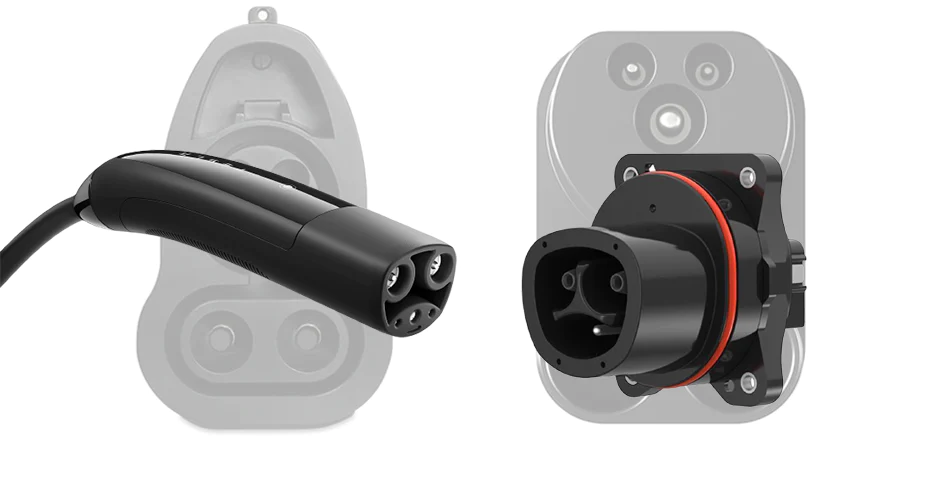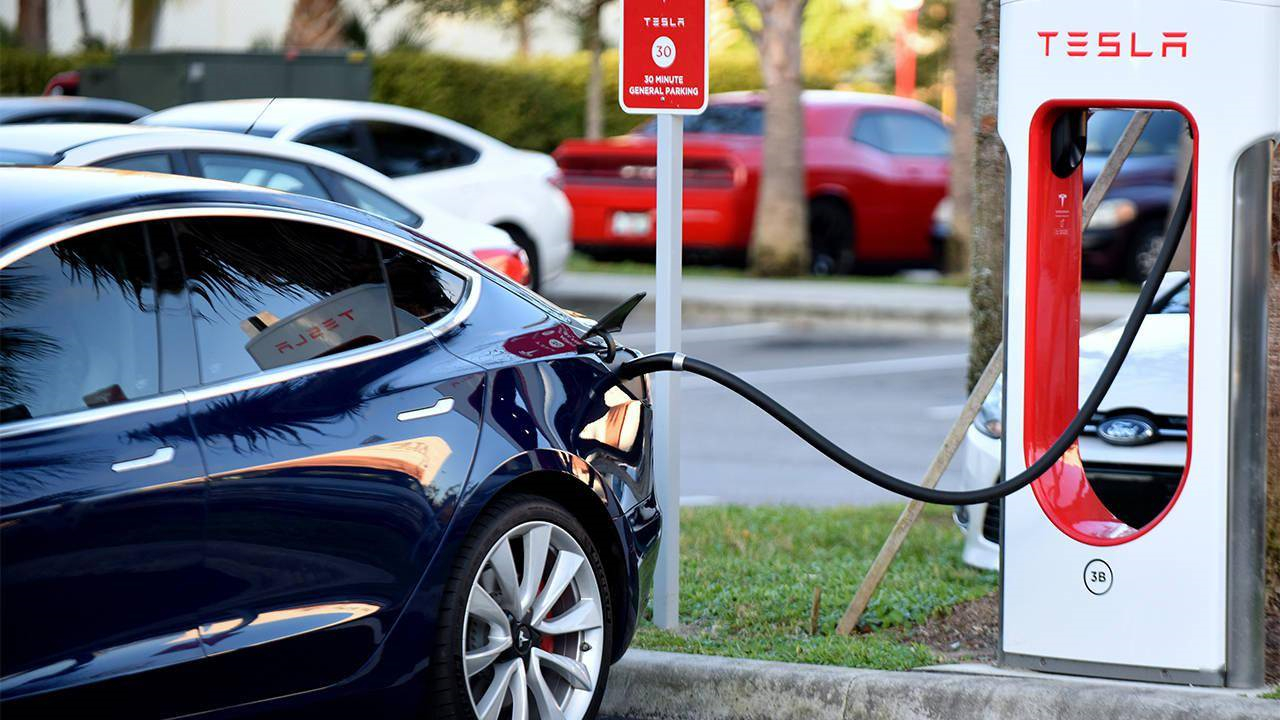What is NACS Adapter
Introducing first, the North American Charging Standard (NACS) is the most mature and widely used in North America. The NACS (formerly the Tesla charging connector) will create a reasonable alternative to the CCS Combo connector.
For years, non-Tesla EV owners have complained about the relative inelegance and unreliability of CCS (and specifically the Combo connector) compared to Tesla’s proprietary alternatives, a concept that Tesla hinted at in its announcement. Will the charging standard be unified with the commercially available CCS connectors? We may know the answer in September 2023!
CCS1 Adapter & CCS2 Adapter
The “Combined Charging System” (CCS) Combo connector was essentially born of compromise. The Combined Charging System (CCS) is a standardized charging protocol for electric vehicles (EVs) that enables AC and DC charging using a single connector. It was developed by the Charging Interface Initiative (CharIN), a global consortium of EV manufacturers and suppliers, to provide a common charging standard for EVs and ensure interoperability across different EV brands and charging infrastructure.
The CCS connector is a combined plug supporting AC and DC charging, with two additional DC pins for high-power charging. The CCS protocol supports charging power levels from 3.7 kW up to 350 kW, depending on the capabilities of the EV and the charging station. This allows for a wide range of charging speeds, from a slow overnight charge at home to a fast public charging station that can provide an 80% charge in as little as 20-30 minutes.
CCS is widely adopted in Europe, North America, and other regions and is supported by many major automakers, including BMW, Ford, General Motors, and Volkswagen. It is also compatible with the existing AC charging infrastructure, allowing EV owners to use the same charging stations for AC and DC charging.
Figure 2: European CCS charging port, charging protocol
Overall, the CCS protocol provides a common and versatile charging solution that supports fast and convenient charging for EVs, helping to increase their adoption and reduce reliance on fossil fuels.
2. Combined Charging System and Tesla charging connector Distinction
The main distinction between the Combined Charging System (CCS) and the Tesla charging connector is that they are different charging protocols and use different physical connectors.
As I explained in my previous answer, the CCS is a standardized charging protocol that allows AC and DC charging using a single connector. It is supported by a consortium of automakers and suppliers and is widely used in Europe, North America, and other regions.
On the other hand, the Tesla charging connector is a proprietary charging protocol and connector used exclusively by Tesla vehicles. It supports high-power DC charging and is designed for use with Tesla’s Supercharger network, which provides fast charging for Tesla vehicles across North America, Europe, and other regions.
While the CCS protocol is more widely adopted and supported by various automakers and charging infrastructure providers, the Tesla charging connector offers faster charging speeds for Tesla vehicles and the convenience of the Tesla Supercharger network.
However, Tesla has also announced that it will transition to the CCS standard for its European vehicles starting in 2019. This means that new Tesla vehicles sold in Europe will be equipped with a CCS port, allowing them to use CCS-compatible charging stations in addition to Tesla’s Supercharger network.
Implementing the North American Charging Standard (NACS) will mean that Teslas in North America will solve the same problem of inconvenient charging as Teslas in Europe. There may be a new product on the market – Tesla to CCS1 Adapter and Tesla to J1772 Adapter (if you are interested, you can leave a private message, and I will introduce the birth of this product in detail)
3. Tesla Nacs Market Direction
Tesla charging gun and Tesla charging port | Image source. Tesla
NACS is the most common charging standard in North America. There are twice as many NACS vehicles as CCS, and Tesla’s Supercharger network has 60% more NACS piles than all CCS-equipped networks combined. On November 11, 2022, Tesla announced that it would open the Tesla EV Connector design to the world. A combination of local charging network operators and automakers will place Tesla charging connectors and charging ports, now called North American Charging Standards (NACS), on their equipment and vehicles. Because the Tesla Charging Connector is proven in North America, it has no moving parts, is half the size, and has twice the power of the Combined Charging System (CCS) connector.
Power supply network operators have already started planning to install NACS on their chargers, so Tesla owners can expect to charge on other networks without the need for adapters. Adapters like the commercially available ones, Lectron Adapter, Chargerman Adapter, Tesla Adapter, and other adapter authors are expected to be phased out by 2025!!! Likewise, we look forward to future EVs using the NACS design to charge on Tesla’s North American Supercharging and Destination Charging network. This will save space in the car and eliminate the need to travel with bulky adapters. World energy will also trend toward international carbon neutrality.
4. Can the agreement be used directly?
From the official response given, the answer is yes. As a purely electrical and mechanical interface independent of the use case and communication protocol, NACS can be adopted directly.
4.1 Safety
Tesla designs have always taken a safe approach to safety. Tesla connectors have always been limited to 500V, and the NACS specification explicitly proposes a 1000V rating (mechanically compatible!) of connectors and inlets that would be well suited to this use case. This will increase charging rates and even indicates that such connectors are capable of megawatt levels of charging.
An interesting technical challenge for NACS is the same detail that makes it so compact – sharing AC and DC pins. As Tesla details in the corresponding appendix, to properly implement NACS on the vehicle side, specific safety and reliability hazards must be considered and accounted for.
Post time: Nov-11-2023

 Portable EV Charger
Portable EV Charger Home EV Wallbox
Home EV Wallbox DC Charger Station
DC Charger Station EV Charging Module
EV Charging Module NACS&CCS1&CCS2
NACS&CCS1&CCS2 EV Accessories
EV Accessories


